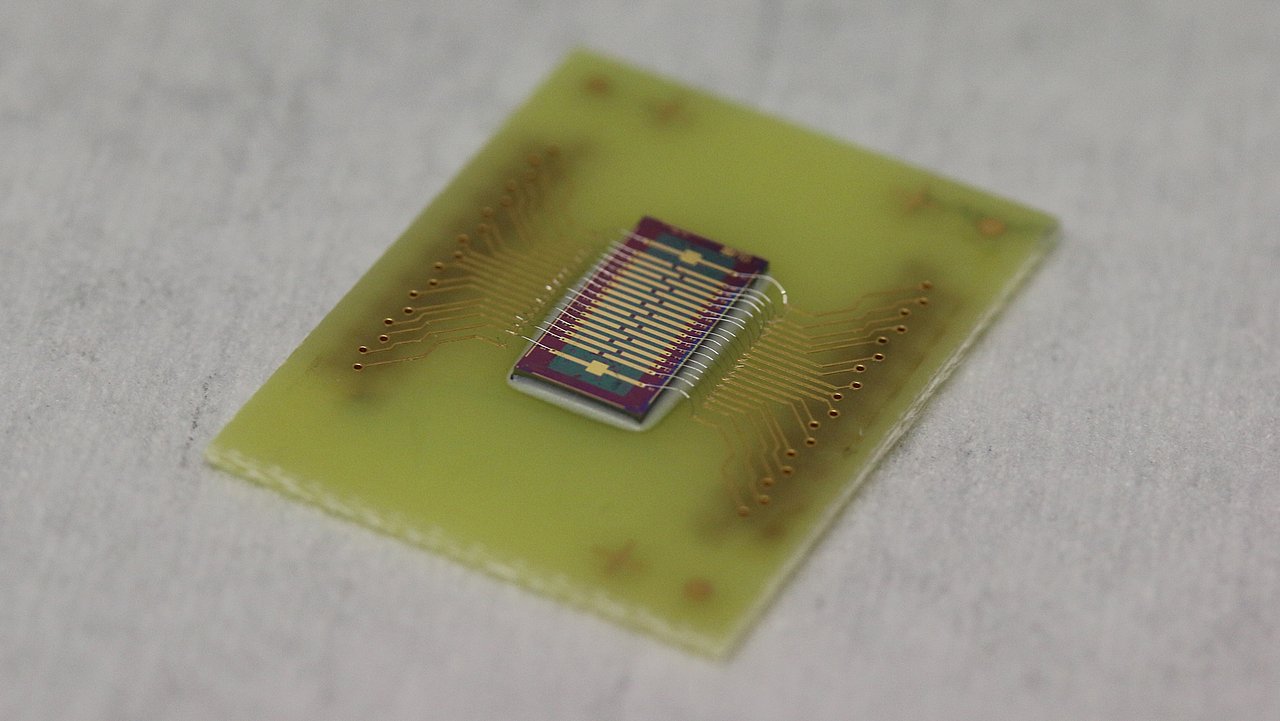Press releases
Thuringian project develops novel technology platform for the detection of SARS-CoV-2
Change in electrical conductivity visualises virus material
Ilmenau/Jena/Bad Langensalza (08 March 2021) Testing, testing, testing – if there is one thing the Corona pandemic has taught us, it is the importance of diagnostic tools that can quickly and reliably detect pathogens or antibodies, for example. The diagnostic toolbox must be constantly expanded with new innovative methods to be able to meet both SARS-CoV-2 and future challenges of this kind. Chemists of Friedrich Schiller University Jena, IMMS Institut für Mikroelektronik- und Mechatronik-Systeme gemeinnützige GmbH (IMMS GmbH) and fzmb GmbH, Forschungszentrum für Medizintechnik und Biotechnologie are therefore jointly developing a new technology platform for rapid tests. On Friday (5 March), the project “ViroGraph – Multiplex Detection System for the Identification of Viruses based on Graphene Field Effect Transistors”, which is funded by the German Federal Ministry of Economics and Technology and is scheduled to run for two and a half years, started with a virtual kick-off meeting that was also attended by the members of the accompanying committee from six companies and institutions.
The aim of the new electronic platform is to open up the graphene sensors already researched at Jena University for new so-called point-of-care devices. In the future, such small and mobile devices should be as easy to use as Covid 19 rapid tests on site and detect viruses, viral proteins, or antibodies highly sensitively – comparable to PCR tests. With the new project, the partners want to lay the foundation for many more precise, sensitive and specific applications in the field of on-site diagnostics beyond SARS-CoV-2.
Sensor made from graphene
In principle, certain proteins are applied to the test strips of the currently used rapid tests as capture molecules, which – if present in the tested sample – react with virus components or with antibodies. This produces a coloured stripe that indicates the result. In the new platform of the ViroGraph project, a novel electronic sensor made of graphene will take over the task of the test strip – covered by a carbon membrane only one nanometre thick, which fixes the capture molecules on the sensor surface. If the analytes from a sample – such as antibodies or virus components – accumulate on the sensor surface, the electrical conductivity of the sensor changes. This parameter can be read electronically and provides the test result.
“Field-effect transistors are already used, for example, to measure pH values, but they have not been sensitive and specific enough for applications in the field of immunological diagnostics,” explains Prof. Dr. Andrey Turchanin from Jena University. “However, by combining heterostructures made of graphene, which provides an appropriate conductivity, and the molecular carbon nanomembrane, which biochemically functionalises the sensor surface, this weakness could be remedied. This is because the 2D material graphene, which consists of only one atomic layer, is characterised by a special electrical conductivity - sensitive changes in conductivity during the coupling of analytes, i.e. the molecules we are looking for, can be measured quickly and easily.”
Small devices and many parameters per quick test
To be able to measure these smallest electrical currents in the range of a few nanoamperes at all, the project coordinators of IMMS are developing suitable miniaturised measuring technology. “This is important to integrate the performance required for our application of very large measuring devices that can normally determine such parameters into a handy point-of-care device,” says Michael Meister from IMMS. “A particular challenge here is also to measure several graphene sensors simultaneously to enable multi-parameter analytics.”
This is where the particular strength of the electronic method should lie: “We want to lay the foundation for a multiplex detection system with which we can detect several analytes simultaneously,” explains Dominik Gary from fzmb GmbH, whose employees are developing immunological and molecular biological detection systems for the new sensor. “Thus, the ViroGraph system would possibly even be suitable for gene typing and could therefore detect various mutations of viruses in a rapid procedure.”
View from industry
“For us as experts in immunoassays and ELISA, certainty of results and simple and rapid test procedures are central,” explained Dr. Peter Rauch, member of the ViroGraph project advisory committee and managing director of CANDOR Bioscience GmbH. The SARS-CoV-2 virus pandemic clearly shows the need for point-of-care systems with high analytical performance that can be used on patients on-site at reasonable prices. “The approaches pursued in the project can meet the challenges electronically. We will therefore follow the work with great interest and provide advice and support.”
Project advisory committee:
Funding
Funded by the Federal Ministry for Economic Affairs and Energy (BMWi) / Federal Ministry for Economic Affairs and Climate Action (BMWK) on the basis of a resolution of the German Bundestag under IGF project no.: 21363 BR/1.
Related content

Project
ViroGraph
A novel technology platform with graphene-based field-effect transistor for the detection of SARS-CoV-2 is being developed
Contact
Contact
Dipl.-Hdl. Dipl.-Des. Beate Hövelmans
Head of Corporate Communications
beate.hoevelmans(at)imms.de+49 (0) 3677 874 93 13
Beate Hövelmans is responsible for the text and image editorial work on this website, for the social media presence of IMMS on LinkedIn and YouTube, the annual reports, for press and media relations with regional and specialist media and other communication formats. She provides texts, photographs and video material for your reporting on IMMS, arranges contacts for interviews and is the contact person for events.





